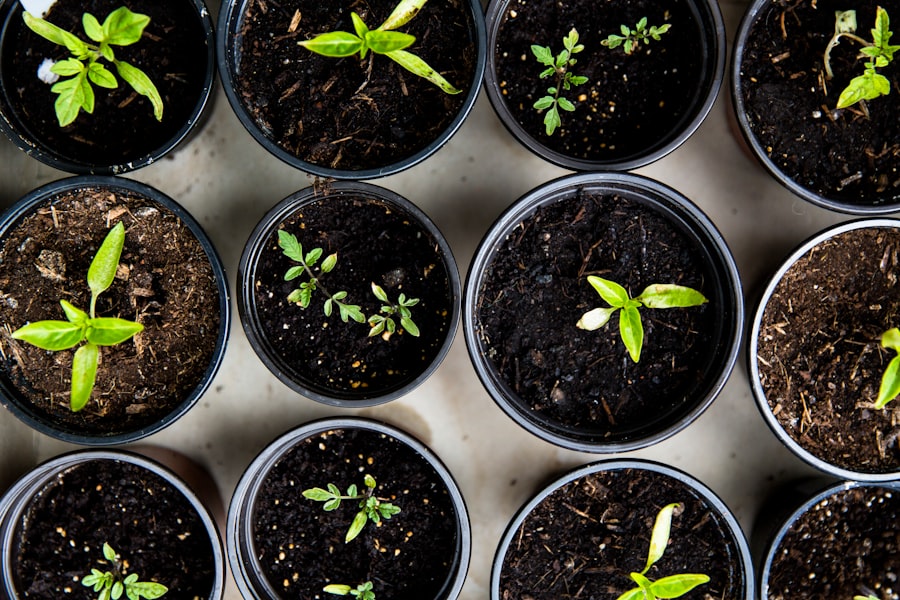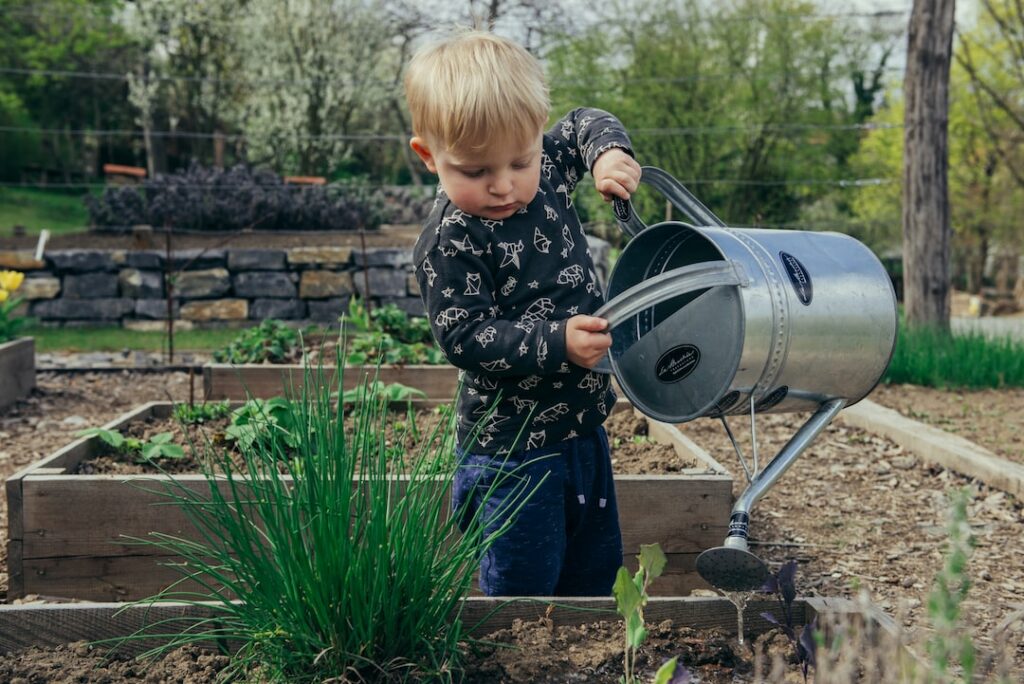Traditional gardening practices have had a significant impact on the environment. The use of chemical fertilizers and pesticides, excessive water consumption, and the destruction of natural habitats have all contributed to environmental degradation. However, there is a growing need for sustainable and eco-friendly gardening practices that minimize harm to the environment and promote a healthier ecosystem.
Eco-friendly gardening practices are essential for several reasons. First, they help reduce pollution and protect the soil, water, and air from harmful chemicals. By using organic fertilizers and natural pest control methods, gardeners can avoid the negative effects of synthetic chemicals on the environment. Second, eco-friendly gardening practices promote biodiversity by creating habitats for beneficial insects, birds, and other wildlife. Finally, sustainable gardening practices help conserve resources such as water and energy, contributing to a more sustainable future.
Understanding Sustainable Gardening Practices
Sustainable gardening is an approach to gardening that aims to minimize the negative impact on the environment while promoting a healthy and productive garden. It involves using organic fertilizers, conserving water, promoting biodiversity, and reducing waste. By adopting sustainable gardening practices, gardeners can create a beautiful and productive garden while minimizing harm to the environment.
There are several principles of sustainable gardening that gardeners should follow. First, it is important to use organic fertilizers and compost instead of synthetic chemicals. Organic fertilizers provide essential nutrients to plants without harming the soil or water. Second, conserving water is crucial in sustainable gardening. This can be achieved by using drip irrigation systems, mulching, and choosing drought-resistant plants. Third, promoting biodiversity is essential for a healthy garden ecosystem. This can be done by planting a variety of native plants that attract beneficial insects and birds. Finally, reducing waste is an important aspect of sustainable gardening. This can be achieved by composting kitchen scraps and yard waste instead of throwing them away.
Choosing Drought-Resistant Plants for Your Garden
Choosing plants that require less water is an important aspect of sustainable gardening. By selecting drought-resistant plants, gardeners can conserve water and create a more sustainable garden. Drought-resistant plants are adapted to dry conditions and can survive with minimal watering.
There are many drought-resistant plants suitable for different regions. In arid regions, cacti and succulents are excellent choices as they store water in their leaves and stems. Lavender, rosemary, and sage are also drought-resistant herbs that add beauty and fragrance to the garden. In more temperate regions, ornamental grasses such as fountain grass and blue fescue are excellent choices. These grasses have deep root systems that allow them to survive with less water. Additionally, native plants are often well-adapted to the local climate and require less water. Researching native plants in your region can help you choose the best drought-resistant plants for your garden.
Incorporating Green Landscaping Techniques into Your Garden Design
Green landscaping is a concept that focuses on creating a garden that is environmentally friendly and sustainable. It involves using native plants, conserving water, reducing waste, and promoting biodiversity. By incorporating green landscaping techniques into your garden design, you can create a beautiful and sustainable outdoor space.
One of the main benefits of green landscaping is the conservation of water. This can be achieved by using rainwater harvesting systems, installing drip irrigation systems, and choosing plants that require less water. Another important aspect of green landscaping is reducing waste. This can be done by composting yard waste and using recycled materials for garden structures and pathways. Additionally, green landscaping promotes biodiversity by creating habitats for beneficial insects, birds, and other wildlife. By planting a variety of native plants, you can attract pollinators and create a thriving ecosystem in your garden.
Organic Gardening Tips for a Healthier Garden
Organic gardening is a method of gardening that avoids the use of synthetic chemicals and promotes natural processes. It focuses on building healthy soil, using organic fertilizers, and practicing natural pest control methods. Organic gardening has several benefits, including improved soil health, reduced pollution, and a healthier garden ecosystem.
One of the main benefits of organic gardening is improved soil health. By using organic fertilizers and compost, gardeners can enrich the soil with essential nutrients and improve its structure. This leads to healthier plants that are more resistant to pests and diseases. Organic gardening also reduces pollution by avoiding the use of synthetic chemicals. Chemical fertilizers and pesticides can contaminate the soil, water, and air, harming beneficial insects, birds, and other wildlife. Finally, organic gardening promotes a healthier garden ecosystem by attracting beneficial insects and birds. By avoiding synthetic chemicals, gardeners can create a balanced ecosystem where pests are controlled naturally.
Water-Saving Garden Designs for a Sustainable Future

Water conservation is a crucial aspect of sustainable gardening. With increasing water scarcity in many regions, it is important to design gardens that minimize water consumption. There are several water-saving garden designs that can help conserve water and create a sustainable future.
One example of a water-saving garden design is a rain garden. A rain garden is designed to capture rainwater runoff from roofs, driveways, and other surfaces. It consists of a shallow depression planted with native plants that can tolerate both wet and dry conditions. The plants in the rain garden absorb the rainwater, reducing runoff and recharging the groundwater. Another example of a water-saving garden design is xeriscaping. Xeriscaping involves using drought-resistant plants, mulching, and efficient irrigation systems to minimize water consumption. By choosing plants that are adapted to the local climate and conserving water through efficient irrigation methods, xeriscaping can significantly reduce water usage in the garden.
How to Choose Native Plants for Your Garden
Choosing native plants for your garden is an important aspect of sustainable gardening. Native plants are well-adapted to the local climate and require less water, fertilizer, and pesticides. They also provide food and habitat for local wildlife, promoting biodiversity in the garden.
When selecting native plants for your garden, it is important to consider the specific conditions of your site. Native plants have different requirements in terms of sunlight, soil type, and moisture levels. Researching native plants in your region and consulting with local experts can help you choose the best plants for your garden. It is also important to consider the size and growth habit of native plants. Some native plants can become invasive if not properly managed, so it is important to choose plants that are suitable for your garden size and maintenance level. By incorporating native plants into your garden design, you can create a beautiful and sustainable outdoor space that supports local wildlife.
Creating a Wildlife-Friendly Garden with Sustainable Practices
Creating a garden that supports local wildlife is an important aspect of sustainable gardening. By providing food, water, and shelter for birds, butterflies, bees, and other wildlife, gardeners can contribute to biodiversity conservation and create a thriving ecosystem in their own backyard.
There are several tips for creating a wildlife-friendly garden using sustainable practices. First, it is important to provide a variety of food sources for wildlife. This can be done by planting a diverse range of native plants that produce nectar, berries, seeds, or fruits. Second, providing water sources such as birdbaths or small ponds can attract birds and other wildlife to your garden. Third, creating shelter for wildlife is crucial. This can be achieved by planting dense shrubs or trees that provide nesting sites and cover from predators. Finally, avoiding the use of synthetic chemicals such as pesticides and herbicides is essential for a wildlife-friendly garden. These chemicals can harm beneficial insects, birds, and other wildlife. By using organic fertilizers and natural pest control methods, gardeners can create a safe and healthy environment for wildlife.
Companion Planting for a Healthy and Productive Garden
Companion planting is a gardening technique that involves planting different crops together to benefit each other. It is based on the concept that certain plants have natural affinities or repel pests when grown together. Companion planting has several benefits, including improved pest control, increased pollination, and enhanced nutrient uptake.
One example of companion planting is the combination of tomatoes and basil. Basil repels pests that commonly attack tomatoes, such as aphids and tomato hornworms. Planting basil near tomatoes can help reduce pest damage and improve tomato yields. Another example is the combination of beans and corn. Beans fix nitrogen in the soil, which is beneficial for corn. In return, corn provides support for the climbing beans. This combination improves nutrient uptake for both crops and increases overall productivity.
There are many other examples of companion planting combinations that can benefit your garden. Researching companion planting combinations for specific crops can help you maximize the health and productivity of your garden.
Maintaining Your Eco-Friendly Garden: Tips and Tricks for Long-Term Success
Maintaining an eco-friendly garden requires ongoing care and attention. There are several tips and tricks that can help you maintain a healthy and sustainable garden in the long term.
One important aspect of maintaining an eco-friendly garden is soil health. Healthy soil is the foundation of a successful garden. It is important to regularly test your soil to determine its pH level and nutrient content. This will help you determine if any amendments are needed to improve soil fertility. Adding organic matter such as compost or well-rotted manure can also improve soil structure and fertility.
Proper watering techniques are also crucial for maintaining an eco-friendly garden. Overwatering can lead to water waste and promote the growth of fungal diseases. It is important to water deeply and infrequently, allowing the soil to dry out between waterings. Using mulch can also help conserve moisture in the soil and reduce the need for watering.
Finally, it is important to practice proper pest control methods in an eco-friendly garden. Instead of using synthetic pesticides, it is recommended to use natural pest control methods such as handpicking pests, using insecticidal soaps or oils, and attracting beneficial insects that prey on pests. By practicing these tips and tricks, you can maintain a healthy and sustainable garden for years to come.
In conclusion, eco-friendly gardening practices are essential for a sustainable future. Traditional gardening practices have had a negative impact on the environment, but by adopting sustainable and eco-friendly practices, gardeners can minimize harm to the environment and promote a healthier ecosystem. From choosing drought-resistant plants to incorporating green landscaping techniques, there are many ways to create an eco-friendly garden. By implementing these practices in our own gardens, we can contribute to a more sustainable future and create beautiful outdoor spaces that benefit both ourselves and the environment.
If you’re interested in creating a minimalist and eco-friendly garden, you might also enjoy reading this article on “Minimalist Living Ideas for Your Home” from House Hack Tips. It provides practical tips and inspiration for simplifying your living space and reducing your environmental impact. Check it out here.

